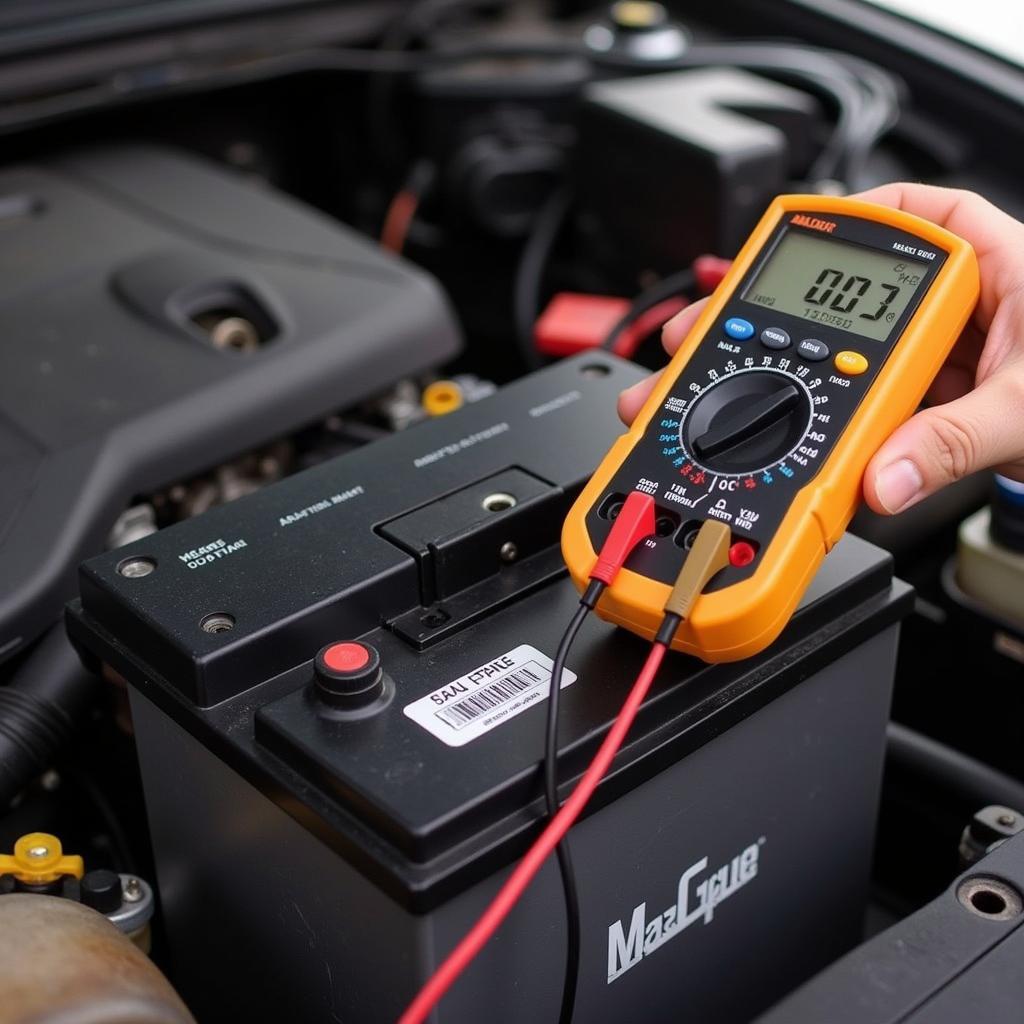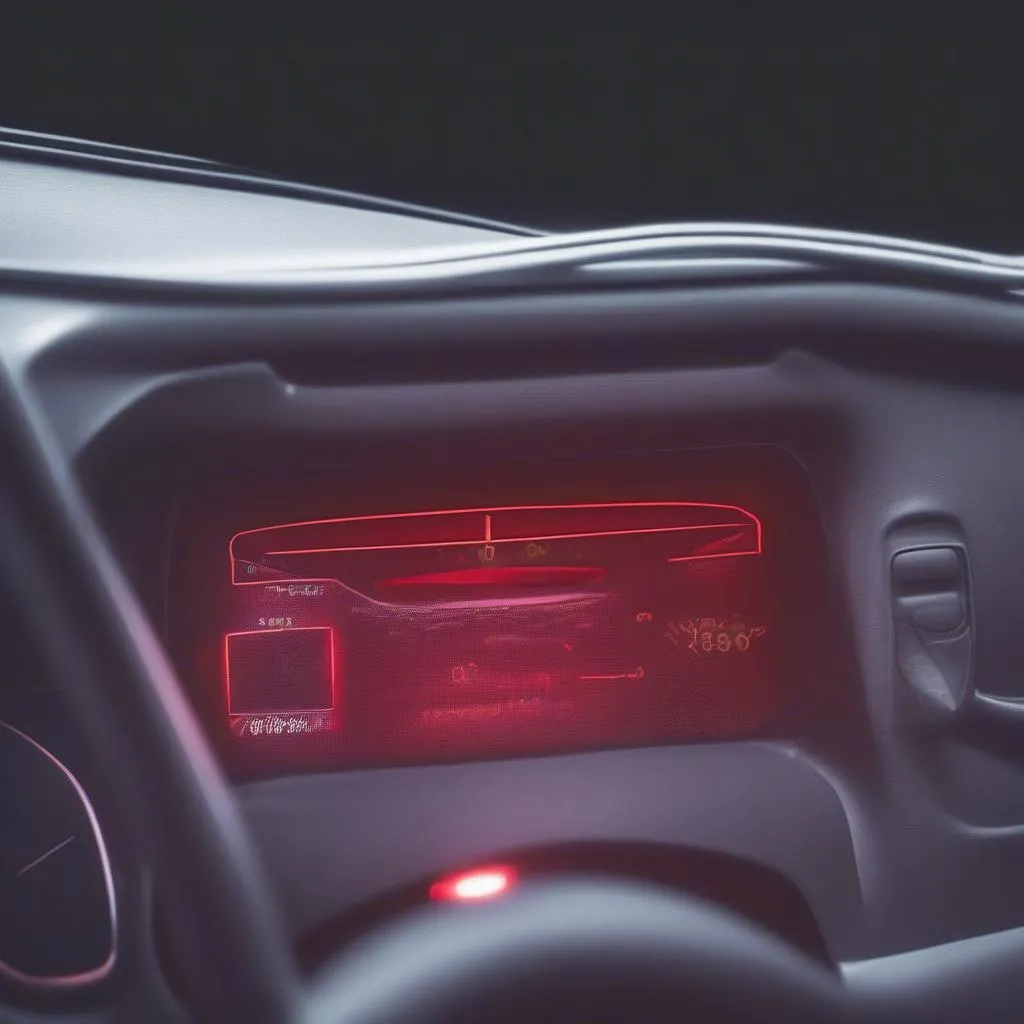If your car battery dies after sitting for a few days, you’re not alone. This is a common issue that can be caused by a variety of factors, from a simple parasitic drain to a faulty battery. This article will help you diagnose the problem and get your car back on the road. Learn about common causes, effective troubleshooting steps, and how remote diagnostics and software solutions can offer efficient fixes.
Understanding Why Your Car Battery Dies After a Few Days
Several culprits can drain your car’s battery while it’s parked. A parasitic draw, where a component continues to consume power even when the car is off, is a frequent offender. Faulty components, like a failing alternator or a malfunctioning door switch, can also contribute to this problem. Even extreme temperatures, like those experienced during a cold snap, can weaken a battery and lead to premature discharge. cold weather car battery drain provides further information on how cold weather impacts your battery.
Common Causes of Car Battery Drain
- Parasitic Draw: This is the most common cause. Even small draws from things like interior lights, clocks, or radio memory can deplete a battery over time.
- Faulty Alternator: A failing alternator won’t charge the battery properly while the car is running, leading to a discharged battery after a few days of inactivity.
- Bad Battery: An old or damaged battery may not hold a charge effectively, resulting in a dead battery even after a short period.
- Extreme Temperatures: Both extreme heat and cold can negatively affect battery performance and lifespan.
- Corroded Terminals: Corroded battery terminals impede the flow of electricity, contributing to battery drain and starting issues.
 Testing a car battery with multimeter
Testing a car battery with multimeter
Diagnosing the Problem
Diagnosing a dead battery requires a systematic approach. Start by checking the battery’s voltage using a multimeter. A reading below 12.6 volts usually indicates a problem. Next, inspect the battery terminals for corrosion. If you find corrosion, clean them with a baking soda and water solution. If the battery and terminals appear fine, you’ll need to check for a parasitic draw. This involves disconnecting the negative battery cable and using a multimeter to measure the current flow. A draw above 50 milliamps is generally considered excessive. If you suspect a faulty alternator, have it tested at a local auto parts store. You might encounter similar issues with specific car models like the 2013 Buick Verano. For more information on this, check out 2013 buick verano battery problems.
How to Perform a Parasitic Draw Test
- Turn off all electrical accessories in your car.
- Disconnect the negative battery cable.
- Connect a multimeter in series between the negative battery cable and the negative battery terminal.
- Observe the current reading on the multimeter.
- If the current draw is excessive, start pulling fuses one by one to identify the circuit causing the drain.
“A systematic approach to diagnostics is crucial. Don’t just throw parts at the problem,” advises John Smith, Senior Automotive Technician at ABC Auto Repair.
Remote Diagnostics and Software Solutions
Modern technology offers innovative solutions for car problems. Remote diagnostics and software installations can often pinpoint and address issues like parasitic drains without a physical visit to a mechanic. These services can analyze data from your car’s onboard computer, identify faulty components, and even perform software updates to resolve bugs that might be contributing to battery drain. For example, if you are experiencing brake wear warnings on your Mercedes W211, remote diagnostics may be able to help identify the issue, as highlighted in mercedes w211 brake wear warning. This can save you time and money, and offer a convenient way to maintain your car’s health.
“Remote diagnostics is revolutionizing the way we troubleshoot car issues. It’s quicker, more efficient, and often more cost-effective,” says Sarah Jones, Lead Software Engineer at XYZ Automotive Solutions. This technology allows experts to analyze your vehicle’s data remotely, providing faster and more targeted solutions. For issues like brake warning lights on a Mercedes E320, a remote reset might be the solution. See mercedes e320 brake warning light reset for more information.
Conclusion
A car battery that dies after sitting for a few days can be a frustrating problem, but with a little troubleshooting, you can usually identify and fix the culprit. Remember to check for parasitic drains, faulty alternators, and bad batteries. And consider leveraging the power of remote diagnostics and software solutions for quicker and more efficient repairs. Understanding the common causes of this issue, like those explained in e320 mercedes esp red brake warning light, can help you prevent future occurrences. Addressing the problem promptly ensures you’re not left stranded with a dead battery.



